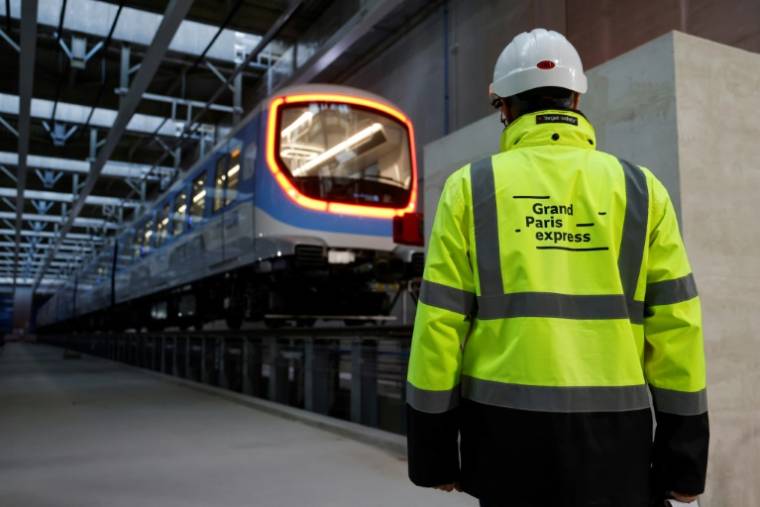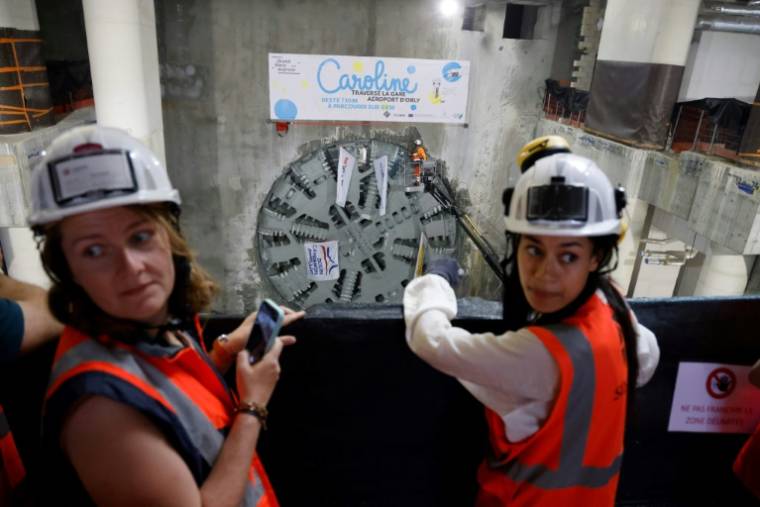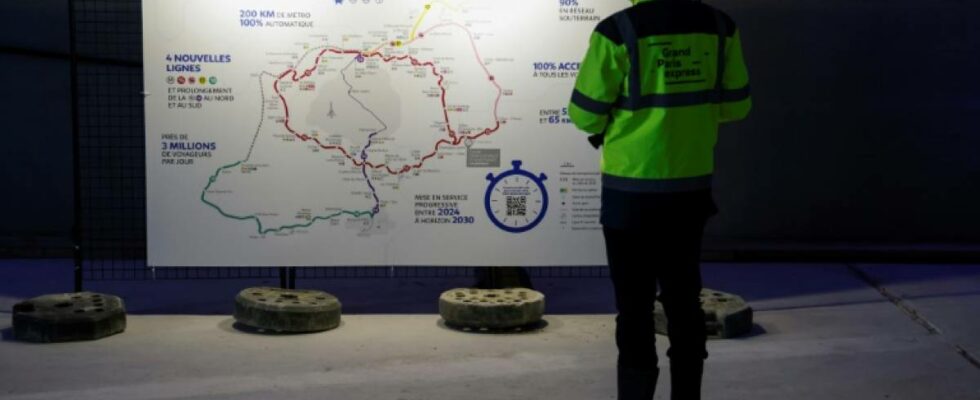An employee in front of the route of metro line 15, November 28, 2023, in Champigny-sur-Marne (AFP / Ludovic MARIN)
More than 30 meters underground, 5G antennas are installed on the walls of line 15 South of the future Paris metro. With the promise of providing users with a reliable and continuous internet connection.
Straddling Noisy-Le-Grand (Seine-Saint-Denis) and Champs-sur-Marne (Seine-et-Marne), the Noisy-Champs station offers a summary of the “Grand Paris Numérique”, a counterpart to the Grand Paris Express , the 200 km long super metro being built by the Société des Grands Projets (SGP, formerly Société du Grand Paris), a public group, around the capital.
Ambition? Enable a user “who is on a call or watching a video stream” to be able to go down the station stairs to join the train, get on and continue their journey “without there being any interruption”, explains to the AFP Thierry Papin, president of Totem France, a subsidiary of the operator Orange in charge of installing the telecoms network on line 15 South.
This line, which is due to open in 2025 between Pont de Sèvres station (Hauts-de-Seine) and Noisy-Champs, will be the first to be fully covered in 5G.
Between the end of 2025 and 2030, four new automatic metro lines, numbered 15 to 18, must be put into service.

A Grand Paris express employee in front of the first train of line 15 at Champigny-sur-Marne station, November 28, 2023 (AFP / Ludovic MARIN)
Each time, an operator is responsible for deploying the telecoms network: Totem France for line 15, the Spanish company Cellnex for lines 16 and 17, and the French company TDF for line 18.
– “Digital continuity” –
“The Grand Paris Express has 3 million travelers per day. It was obvious for us to be able to provide all of these travelers with digital continuity,” underlines Thierry Montalant, in charge of digital at SGP.
To achieve this, transmitters connected to four 4G or 5G antennas are installed on the walls of the tunnel where the metros will pass. Each transmission point is separated by an average of 250 meters to maintain signal strength.
“There are these concentration points which will take the radio signal from the operator, transform it to put it back on an optical fiber. The optical fiber allows us to distribute as close as possible to the amplifiers without disturbing the quality of the signal”, specifies Thierry Papin.

Employees wait for the “Caroline” tunnel boring machine to create the tunnel for the future line 18 of the Grand Paris express, on June 13, 2023, in Orly in Val-de-Marne (AFP / LUDOVIC MARIN)
The network of 170,000 kilometers of optical fiber “is fully protected in the roads, under the concrete, and very integrated into the works” of the Grand Paris Express, adds Thierry Montalant.
Enough to also benefit the twenty communities crossed by the metro line “from these very efficient means of communication”.
The SGP, project manager, regularly reminds us that this is the largest transport and town planning project in Europe. Initially estimated at 19 billion euros in 2010, it should ultimately cost around 35 billion, according to the Court of Auditors.
